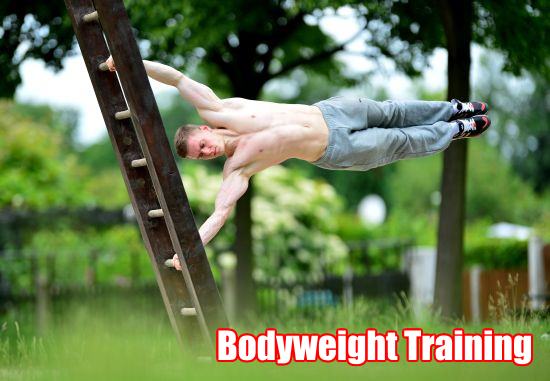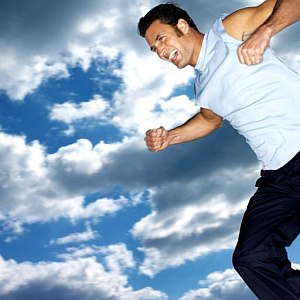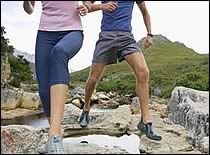Spring is here and it is a really good time for you to start getting in shape if you haven’t been over the Winter. Here are a series of things to watch and be careful for so that you do not end up with a painful injury right out of the start of your spring exercise.
Here are pointers to keep you out of trouble and allow you the most funpointers to help you avoid nuisances and injury. These are tips you otherwise will learn the hard way. Hardened sportsmen and competing athletes know that the best workout can be wrecked by inattention to several small, yet important, details. It will not take you long to discover your own sensitive and tender areas. Experience will soon be your guide. Do be most attentive in the beginning of your workouts outdoors.
Protection For Exposed Areas
In your “exercise infancy” pressure surfaces and exposed areas are subjected to unaccustomed abuse. Lips are very susceptible to chapping and cracking, not only in windy or cold weather, but during almost any activity rigorous enough to cause mouth breathing. Worse yet, there is an unexplained tendency during strenuous exercise to lick the lips, which further aggravates chapping. A thin coat of vaseline or lipsil should be applied over the lips and around the mouth to provide reliable protection.
At all times but especially I think during the early Spring running season, exercise increases secretions of the respiratory tract. Such mucus tends to accumulate in the trachea and nose, being thin and restricting breathing a bit. In the mouth this phlem is much thicker and makes you want to cough it out.
Whether a workout is confined to the four walls of a YMCA or is enjoyed under cloudy, or even sunny skies, runny noses and juicy coughs can be expected. Carry an adequate supply of kleenixs two or three should be sufficient. These can be tucked under the waist band of your shorts or sweats since most sports clothes do not have pockets.
Importance Of New Spring Running Shoes
Except for indigent vineyard farmers who trample on grapes and prosperous professional wrestlers who serve their opponents the smackdown, shoes are essential. The feet are subjected not only to incessant rubbing and friction (about three times a second for the marathoner) but also to the entire of the body.
A well-constructed, individually made pair of shoes (skates, sneakers, boots, etc.) will provide safe and comfortable mobility with a minimum risk of injury. Some people will buy a pair of white elkskin long-distance shoes with foam rubber soles. These were specially designed for their feet. These shoes were still serviceable after a thousand miles of running in good weather and in bad, in competition and in training. Contrast this with the last pair of shoes you bought for ordinary use and probably at a higher price.
Shoe Fitting for Running Shoes
 In buying shoes, friction is a constant enemy. The “knuckles” of the toes should press uniformly against the top of the shoe on forward motion. The top of the foot should not be tightly cramped. The shoes should not rub the inner, outer, or posterior aspects of the ankle. The ball of the foot should lightly indent the side of the shoe when it bears . Be leery of the salesman who reassures you that these shoes “will fit like a glove once you have them broken in.” They should fit like a glove the first time you try them on.
In buying shoes, friction is a constant enemy. The “knuckles” of the toes should press uniformly against the top of the shoe on forward motion. The top of the foot should not be tightly cramped. The shoes should not rub the inner, outer, or posterior aspects of the ankle. The ball of the foot should lightly indent the side of the shoe when it bears . Be leery of the salesman who reassures you that these shoes “will fit like a glove once you have them broken in.” They should fit like a glove the first time you try them on.
Proper shoes should have several features. A wide, thick heel reduces the danger of poorly supported ankles. Since most sports involve forward-and-backward and side-to-side motion, stable heels are needed to lessen sudden ankle strain. Durable material for soles and heels gives longer use for areas most likely to show signs of early wear, such as the outer rear section of the heel and the outer area of the sole behind the ball of the foot next to the fifth toe.
With laces loose, the tops of the shoes containing the eyelets should come close together, separated by less than an inch. When the laces are tightened and tied, the distance between the eyelets should be less than half an inch. During exercise the tongue of the shoe usually slides toward the outer side. If the tops of the shoes are not close, the tongue slips enough to allow the lace to cut into the top of the arch with lacerations resulting. There should be no stitching inside the shoe. Manufacturers of cheap shoes often neglect to glue a thin layer of leather over the inner sole to cover the stitching. Exposure of the feet to uncovered stitches assures a painful and continuing series of blisters, cuts, and sores.
The feet, as -bearing pinions, are most vulnerable to repetitive friction. In the past, and even now, many runnershave clung to theories which are not very practical. Various powders are around to reduce perspiration of the feet. Although foot powders may seem like a great idea, with all the perspiration you will find them turning into a paste in your whoes..




